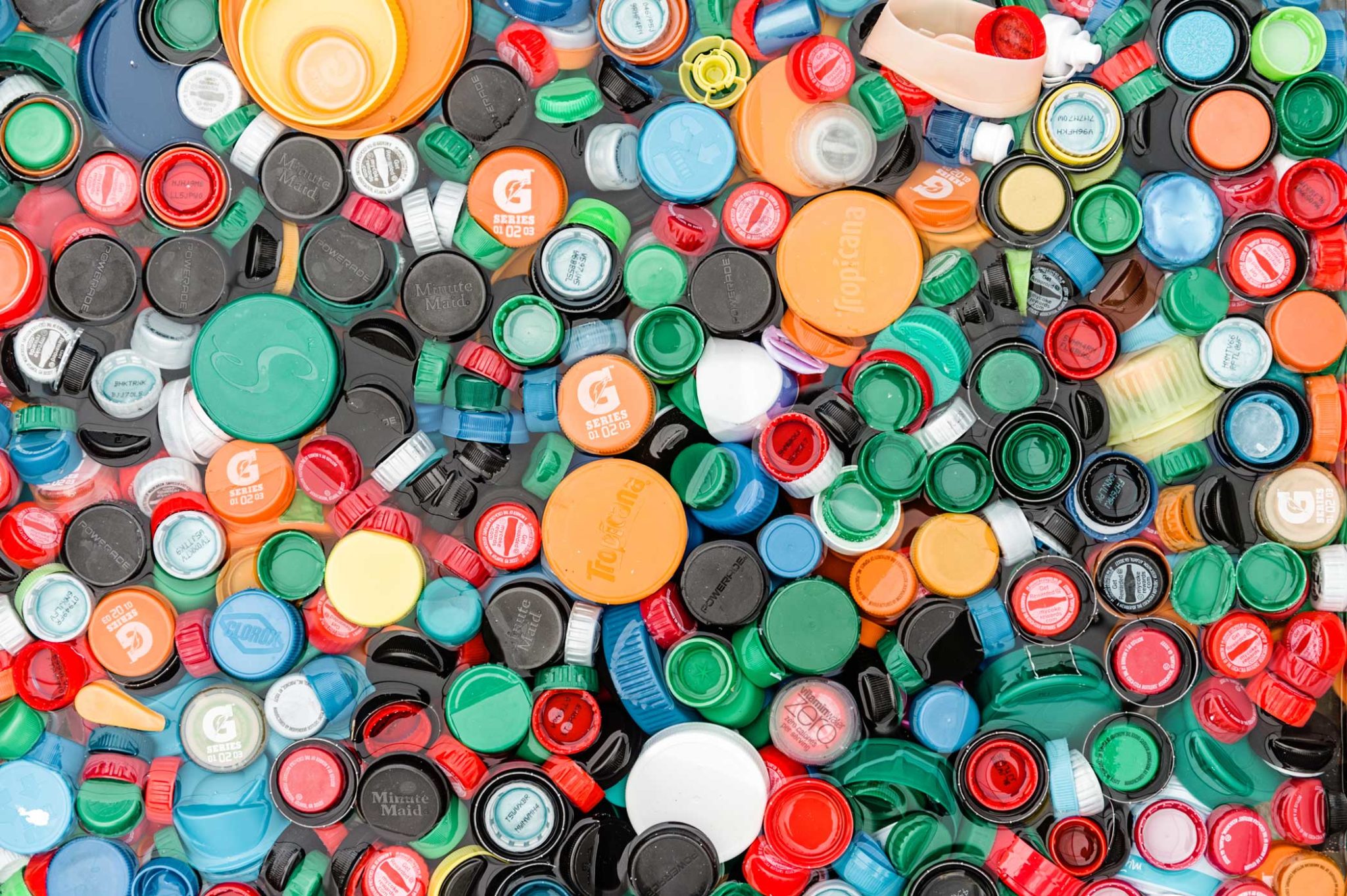The organically inspired installations of artist Maika‘i Tubbs invite viewers to take a second look at garbage.
Text by Lisa Yamada
Images by John Hook
In the alternate universe of Maika‘i Tubbs, nothing is quite as it seems. A diamond ring is, in reality, packing tape, intricate towers are Styrofoam containers, and willowy, woven clouds turn out to be plastic bags. The Honolulu-born artist has built a reputation for himself as being a bit of a “garbage guy,” as he is called by the docents at New York’s Museum of Art and Design, known for transforming ordinary, discarded objects into playful organic forms that mimic the natural world.
Tubbs dreamt up a world in which everyday objects can wield extraordinary potential when he was a child in the neighborhoods of Kailua and Kapahulu on O‘ahu. Here, the rambunctious youngster could often be found sitting in his driveway, staring at the sun for hours on end. “I always thought I had mutant abilities,” says Tubbs, who believed that the longer he sat, the greater the chance of unleashing his latent mutant power, like the kind he saw in his favorite Saturday morning cartoon, X-Men. “Don’t come any closer!” he would scream at his dad. “I might blow you up!”

Cartoons and comic books helped unleash Tubbs’ creative side when he began drawing the superheroes he had come to admire. While attending the University of Hawai‘i at Manoa for a BFA in painting, and later, Parsons The New School for Design in New York for his MFA, Tubbs daydreamed during lectures about using his mutant powers to vanquish a villain hell-bent on destroying his classmates. “If I could have any power, it would be invisibility,” Tubbs says.
Today, the 37-year-old artist resembles the animated Tasmanian Devil in both figure and form, with broad shoulders and strapping biceps, and a frenetic energy while creating artwork. It’s easy to imagine him as a sort of cartoon hero, saving the world from the evils of accumulation and overconsumption, two concepts he became familiar with at his grandmothers’ houses. “They were the first installation artists I ever knew,” says Tubbs of the family matriarchs, recalling their stacks of newspapers piled on the ground, or the plastic food containers collected neatly beneath the sink. “They were actually both really organized with what most people would call clutter, or hoarding, and I do that sometimes.” Tubbs inherited this “clutter gene,” and the family encouraged his creativity. When he told his dad, a hulking football coach, that he was gay, his father’s reply was, “Well of course you are. You’re an artist.” Says Tubbs, “I couldn’t have asked for a better response.”
Now living in New York City, where mountains of trash pile upon curbs daily, Tubbs continues to address society’s obsession with accumulation, and its byproduct, waste—doing so as inconspicuously as possible, as any masked crusader would. During his residency at the city’s Museum of Arts and Design, Tubbs paired geodes made of trash collected from the museum with gelatin-based “sea foam” for Stepping Stones, his installation that addressed how pollution affects coastlines, which was displayed on the museum floor. “I love doing stuff on the ground because people are pretty unaware,” he explains. “I had a lot of lectures about elevating my work as an art thing and putting it on a pedestal, but I just kind of want it to exist like it would.”

The inspiration for the rocks, which he also showed at the Honolulu Museum of Art Spalding House’s Plastic Fantastic? exhibition, was spawned from Tubbs’ 2014 discovery of what ecologists named “plastiglomerate,” a geological term that refers to masses of wood, coral, sand, seashells, and other organic matter bound together with melted plastic, which were first found off the coast of Hawai‘i Island.
For his part, Tubbs aims to keep the trash that he can out of landfills, and to use materials that easily break down within his work. “I’ve always been fascinated by how Native Hawaiians can make stuff with everything, and how they didn’t have a real word for trash before colonization,” he says. “Everything had a purpose and you could use it in so many different ways.” Reflecting on his own repurposing of materials, Tubbs says, “With art, people want to buy things that will last longer than them and appreciate in value, but even when [something] degrades, that’s kind of the beauty in it.”
Tubbs’ work is on display through October 3, 2016 at Honolulu Museum of Art Spalding House’s Plastic Fantastic?. His upcoming exhibitions include an installation at the IUCN World Conservation Conference at the Honolulu Convention Center from September 1–10, 2016, and at the Landesmuseum Hannover in Germany from September 29, 2016–February 26, 2017. For more information, visit maikaitubbs.com.

